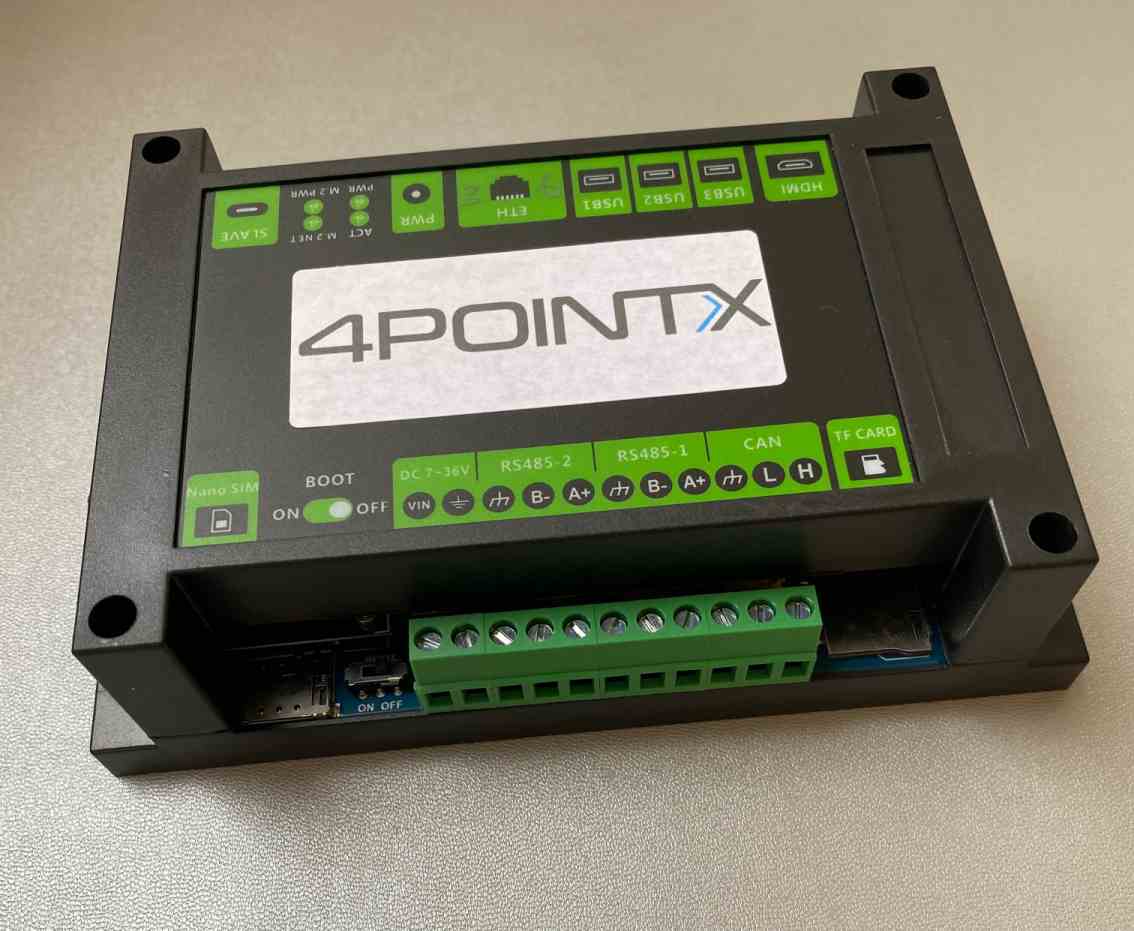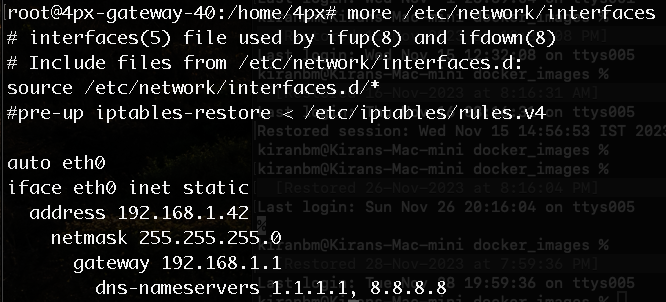IoT Gateway¶
IoT Gateway is a device is used to collect data from Plant floor and send to 4PointX IAoT Platform. The device is based on Raspberry PI and contains necessary interfaces (RS-485, CAN, ETH etc.) for collecting and transferring data.

Initial Configuration Steps¶
The following configuration is required to be performed on IoT Gateway before it can be used for onboarding data.
- Change hostname
Use the following naming convention for hostname: 4px-<app>-<site>-<plant>-<function>-<#> (e.g., 4px-ems-jsw_vjnr-crm1-pltcm-1)
- Set the hostname.
Linux command:
vi /etc/hostname
- Assign IP address
- Assign IP and reboot the device. Linux commands:
sudo vi /etc/network/interfaces #Comment pre-up line. See below for example setting. sudo reboot
Example Settings:
auto eth0 iface eth0 inet static address 192.168.1.42 netmask 255.255.255.0 gateway 192.168.1.1 dns-nameservers 1.1.1.1, 8.8.8.8
- Sample setting:

- After reboot, confirm that the IP is set. Also note the MAC Address. Linux command:
baship addr
- Sample output:

- Set the host
- Change the host parameter in settings.json file to the IP of 4PointX IAoT Platform server and reboot the device
sudo vi /home/4px/4px.edge/config/settings.json sudo reboot
Example Settings:

With these steps the device would be ready to be used for onboarding data.
Testing Modbus Slaves¶
If the Source Sub Type is Modbus RTU, the vibration sensors or energy meters that are required to be onboarded will be connected in a daisy chain loop and they will communicate using Modbus RTU protocol through the RS-485 interface present on IoT Gateway.
Each sensor or energy meter is required to have a unique Slave ID set prior to onboarding. This section would guide in testing which Slaves are able to communicate and if there are any non-communicating Slaves present in the loop.